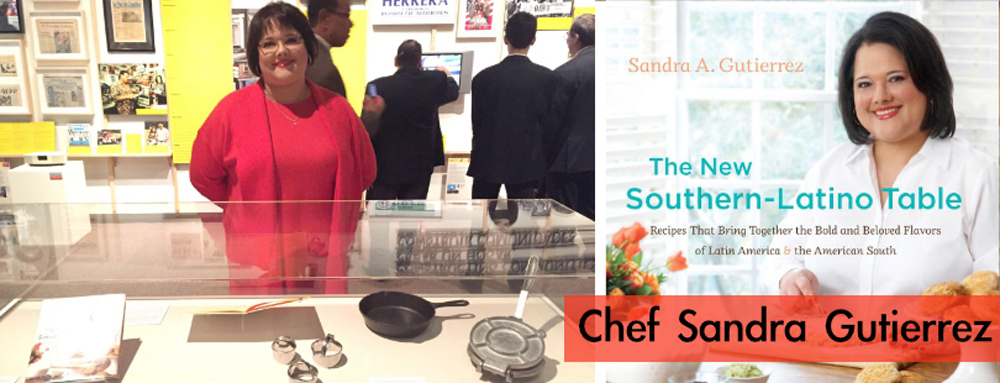Sandra Gutierrez and The New Southern-Latino Table

“History happens on the plate,” says Sandra Gutierrez, cookbook author, food writer and culinary expert on the Southern-Latino food movement. Sandra and I met in the White House Garden during a tour with IACP. She has become a dear friend and has been an integral part of my culinary journey in understanding and appreciating the tastes of Latin America. What a delight to interview her for Kitchen Chat while she was attending Les Dames d’Escoffier conference in Washington D.C.
Born in Guatamala, Sandra Gutierrez moved to the South in 1985. In 1994, she became the first Latina food editor of a North Carolina newspaper. She explains, “At that time, no one was really using cilantro as an ingredient in Southern cuisine.” In 1996, Gutierrez discovered that a new food pathway was showing up on plates in the South and started documenting this movement. She noted that it wasn’t like the Mexican cuisine that influenced the Southwest. University of North Carolina asked her to write a book about this discovery titled The New Southern-Latino Table. She realized that this new pathway was solely created by home chefs and not by the restaurants. “It wasn’t a fusion, but rather an organic movement as home cooks from Latin America began creating their own comfort food,” Gutierrez explains. With pockets of Latinos throughout the South, the introduction of new flavors began to expand the palates of communities influenced by the cuisines of Cubans in Tennessee, Peruvians in D.C. and Central Americans in Charlotte. Come to the Kitchen Chat table and learn about the deliciousness of the New Southern-Latino culinary movement. And if you are visiting Washington D.C. this summer, you will enjoy seeing an exhibit featuring these findings by Sandra Gutierrez at the Smithsonian.
Here are Sandra’s three tips for the home chef:
- Always read a recipe first to make sure that you have all of the ingredients and understand the steps;
- Cut, chop, measure, and set aside all of your ingredients before you start cooking. This will make it so much easier for you to follow the recipe at hand. It’s called having everything in its place or “mise en place.”
- Taste, taste, taste! You can always adjust seasonings to your liking if you taste as you go (unless the ingredients are raw). For example, if you are making rice, taste the liquid for salt and flavor; taste it again when most of the liquid is almost absorbed and adjust. or taste a pasta salad before you serve it and adjust the seasonings (cold foods always need re-seasoning).
What are your favorite Southern-Latino flavors?
Savor the day!
Podcast: Play in new window | Download (Duration: 23:07 — 13.5MB)
Subscribe: RSS

